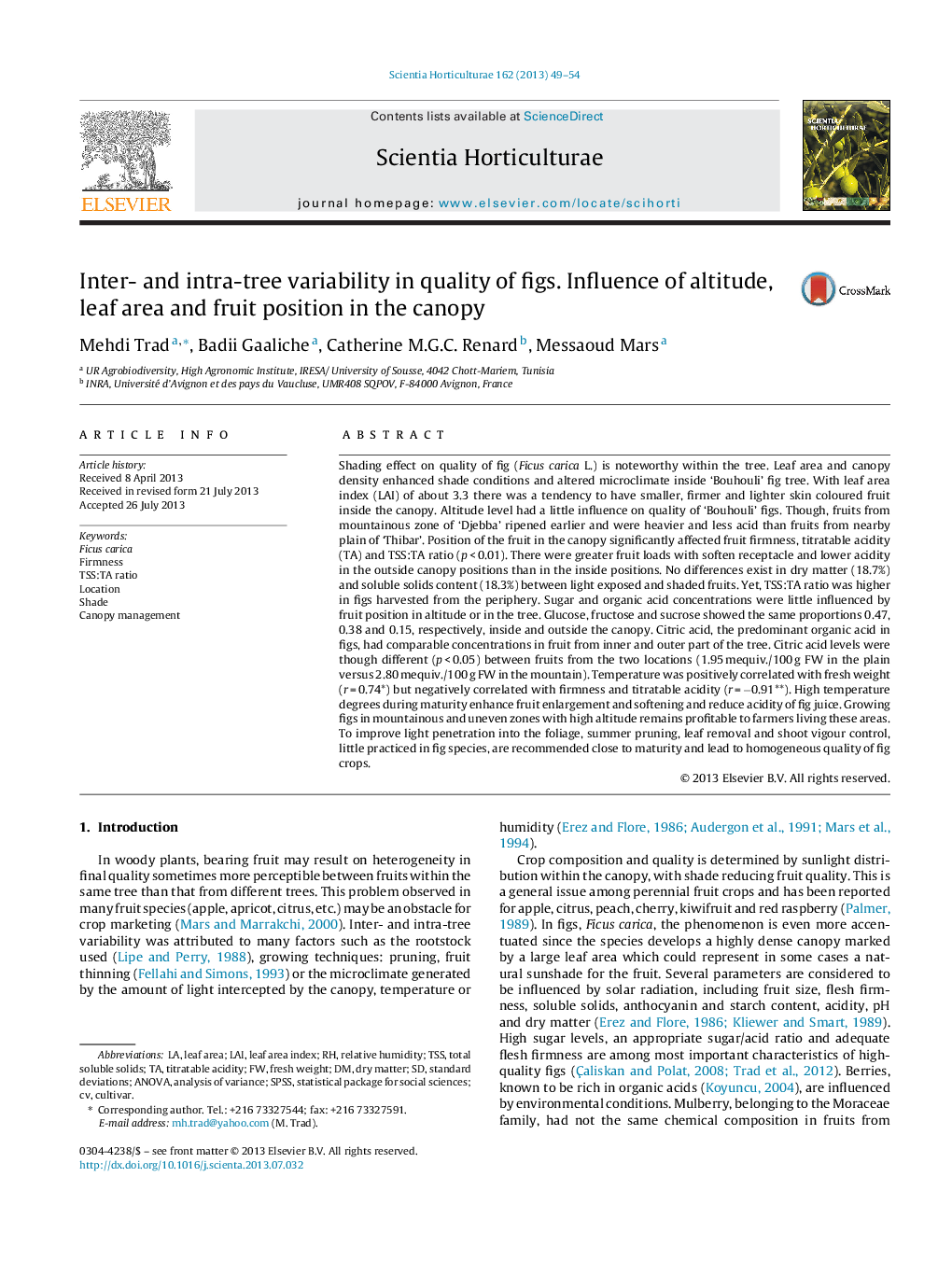| کد مقاله | کد نشریه | سال انتشار | مقاله انگلیسی | نسخه تمام متن |
|---|---|---|---|---|
| 6407263 | 1628836 | 2013 | 6 صفحه PDF | دانلود رایگان |
- Altitude could not be a limiting factor in fig tree growing.
- Elevation in altitude enhances ripening process in 'Bouhouli' figs.
- Quality of figs is affected by shade conditions and canopy density.
- Rising temperature induces fruit enlargement and softening and acidity lowering.
- Summer pruning and canopy management are recommended during maturity.
Shading effect on quality of fig (Ficus carica L.) is noteworthy within the tree. Leaf area and canopy density enhanced shade conditions and altered microclimate inside 'Bouhouli' fig tree. With leaf area index (LAI) of about 3.3 there was a tendency to have smaller, firmer and lighter skin coloured fruit inside the canopy. Altitude level had a little influence on quality of 'Bouhouli' figs. Though, fruits from mountainous zone of 'Djebba' ripened earlier and were heavier and less acid than fruits from nearby plain of 'Thibar'. Position of the fruit in the canopy significantly affected fruit firmness, titratable acidity (TA) and TSS:TA ratio (p < 0.01). There were greater fruit loads with soften receptacle and lower acidity in the outside canopy positions than in the inside positions. No differences exist in dry matter (18.7%) and soluble solids content (18.3%) between light exposed and shaded fruits. Yet, TSS:TA ratio was higher in figs harvested from the periphery. Sugar and organic acid concentrations were little influenced by fruit position in altitude or in the tree. Glucose, fructose and sucrose showed the same proportions 0.47, 0.38 and 0.15, respectively, inside and outside the canopy. Citric acid, the predominant organic acid in figs, had comparable concentrations in fruit from inner and outer part of the tree. Citric acid levels were though different (p < 0.05) between fruits from the two locations (1.95 mequiv./100 g FW in the plain versus 2.80 mequiv./100 g FW in the mountain). Temperature was positively correlated with fresh weight (r = 0.74*) but negatively correlated with firmness and titratable acidity (r = â0.91**). High temperature degrees during maturity enhance fruit enlargement and softening and reduce acidity of fig juice. Growing figs in mountainous and uneven zones with high altitude remains profitable to farmers living these areas. To improve light penetration into the foliage, summer pruning, leaf removal and shoot vigour control, little practiced in fig species, are recommended close to maturity and lead to homogeneous quality of fig crops.
Journal: Scientia Horticulturae - Volume 162, 23 October 2013, Pages 49-54
